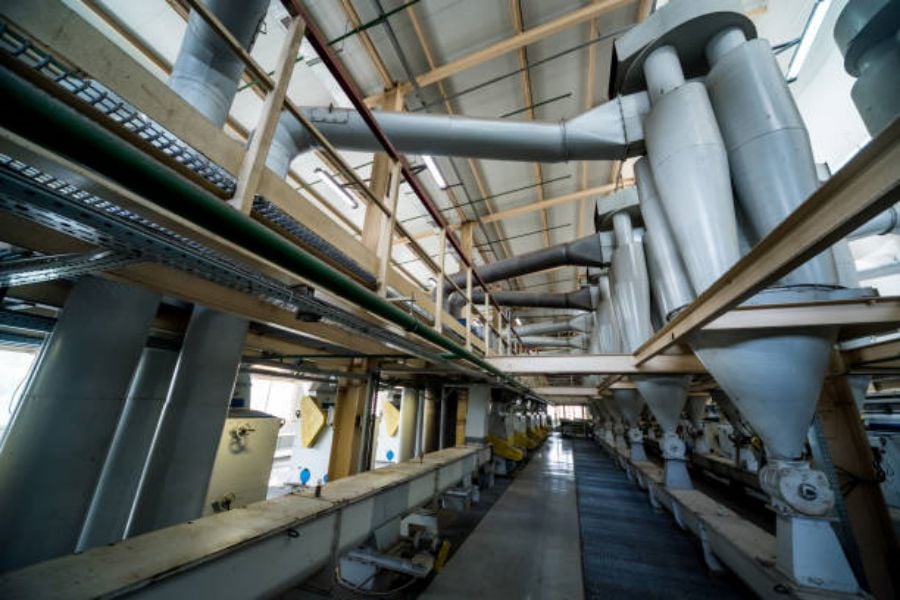Introduction
Metal roll forming equipment is an essential component in the manufacturing industry, particularly in the production of metal parts and components. This article aims to provide a comprehensive guide to understanding metal roll forming equipment, its benefits, applications, and key considerations for choosing the right equipment for specific needs.
What is Metal Roll Forming Equipment?
Metal roll forming equipment is a type of machinery used to shape metal sheets or strips into desired profiles or shapes. It involves passing the metal through a series of rollers that gradually bend and form the metal into the desired shape. This process is commonly used to create a variety of products, including roofing materials, automotive parts, and construction components.
The Benefits of Metal Roll Forming Equipment
Investing in metal roll forming equipment offers numerous benefits to manufacturers. One of the key advantages is the ability to produce consistent and precise shapes. The rollers in the equipment can be customized to produce the desired profile with high accuracy, ensuring uniformity in the final product. Additionally, metal roll forming equipment is highly efficient, capable of producing large quantities of parts or components in a relatively short period. This efficiency can lead to cost savings and increased productivity for manufacturers.
Applications of Metal Roll Forming Equipment
The applications of metal roll forming equipment are vast and diverse. It is commonly used in industries such as construction, automotive, aerospace, and manufacturing. Some specific applications include:
- Roofing and siding materials for residential and commercial buildings
- Automotive body panels and structural components
- Storage racks and shelving systems
- Window and door frames
- Electrical enclosures and cabinets
Factors to Consider When Choosing Metal Roll Forming Equipment
When selecting metal roll forming equipment, there are several important factors to consider:
- Material Compatibility: Ensure that the equipment is capable of handling the specific types and thicknesses of metal materials required for the intended application.
- Production Speed: Consider the desired production speed and output requirements to choose equipment that can meet the necessary production capacity.
- Flexibility: Assess whether the equipment can accommodate different profiles or shapes to allow for future product diversification.
- Automation: Determine the level of automation required, as some equipment offers advanced features such as computer numerical control (CNC) for precise and automated operation.
- Quality and Durability: Look for equipment manufactured by reputable companies known for their quality and durability, ensuring long-term reliability.
Maintenance and Safety Considerations
To ensure the longevity and safe operation of metal roll forming equipment, regular maintenance is essential. This includes lubricating moving parts, inspecting and replacing worn components, and keeping the equipment clean and free from debris. It is also crucial to follow all safety guidelines provided by the equipment manufacturer and provide appropriate training to operators to minimize the risk of accidents or injuries.
Latest Technological Advancements in Metal Roll Forming Equipment
The metal roll forming equipment industry continues to evolve with advancements in technology. Some of the latest developments include:
- High-Speed Roll Forming: Manufacturers are now able to achieve higher production speeds with improved roll forming techniques and advanced control systems.
- Integration of Automation: Automation technologies, such as robotics and artificial intelligence, are being integrated into metal roll forming equipment to enhance efficiency and precision.
- Flexible Roll Forming: New equipment designs allow for rapid changeovers between different profiles or shapes, reducing downtime and increasing productivity.
- Remote Monitoring and Maintenance: Some modern metal roll forming equipment is equipped with remote monitoring capabilities, allowing operators to track performance and address maintenance needs remotely.
Choosing the Right Metal Roll Forming Equipment Manufacturer
When selecting a metal roll forming equipment manufacturer, it is crucial to consider their reputation, experience, and customer support. Look for manufacturers with a proven track record in the industry and positive customer reviews. Additionally, ensure that the manufacturer offers comprehensive after-sales support, including technical assistance, spare parts availability, and warranty coverage.
Conclusion
Metal roll forming equipment plays a vital role in various industries, enabling the efficient production of metal parts and components. By understanding the benefits, applications, and key considerations in choosing the right equipment, manufacturers can make informed decisions to optimize their production processes. As technology continues to advance, the future of metal roll forming equipment looks promising, with increased speed, flexibility, and automation capabilities.

